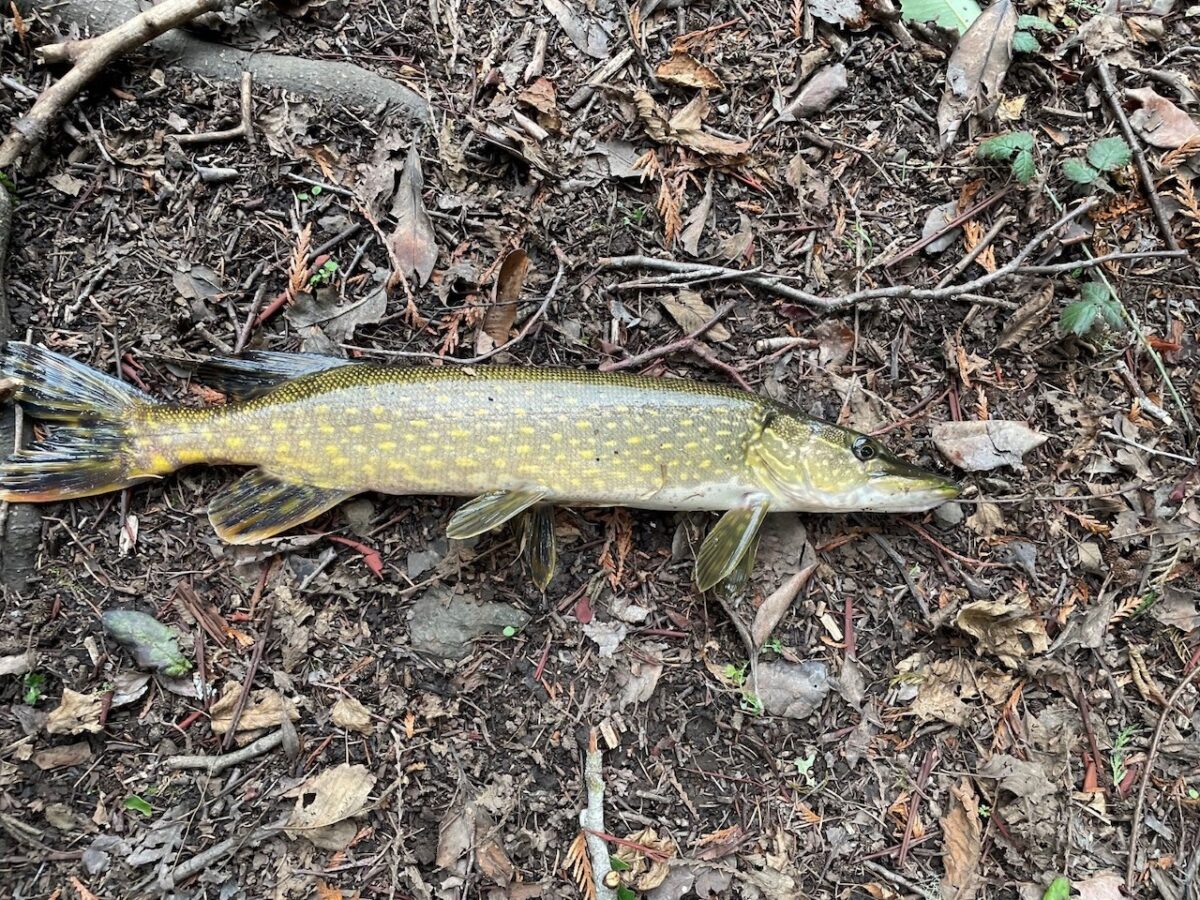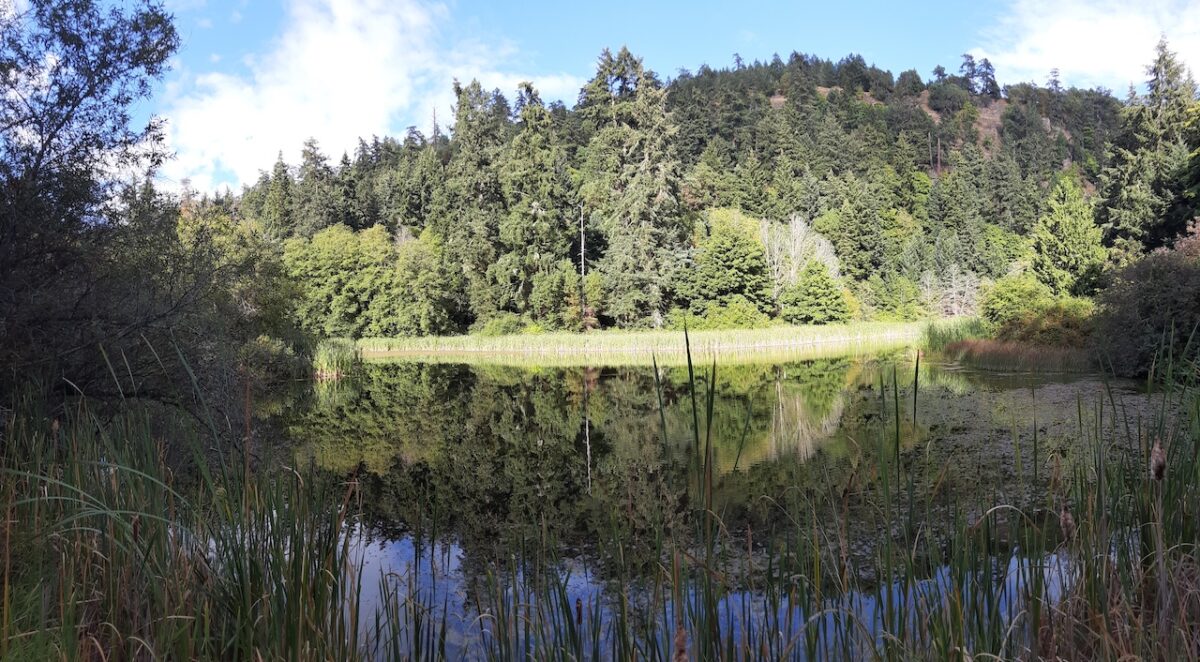
Northern $#%^#@ Pike Caught On San Juan Island
THE FOLLOWING IS A PRESS RELEASE FROM THE SAN JUAN COUNTY CONSERVATION LAND BANK
As if to cap off Washington’s Invasive Species Awareness Week, San Juan County Conservation Land Bank (SJCCLB) and the Washington Department of Fish and Wildlife (WDFW) have confirmed the detection of a northern pike caught in the pond at the land bank’s Limekiln Preserve on western San Juan Island.

This highly invasive and aggressive fish is native to the Midwest, Canada, and eastern Alaska but has been introduced across the U.S., including the upper Columbia River in northeast Washington and sporadic detections in Lake Washington.
The fish at Limekiln was discovered last week by a teenage islander—Evan Hiatt—who shared photos with his parents. His parents passed on the photos to Beth Tate, a biologist with WDFW based on San Juan Island, who reported it to her colleagues and the land bank.
“Local naturalists and anglers are asked to keep a sharp lookout in other ponds and lakes across San Juan County,” said Doug McCutchen, SJCCLB’s Preserve Steward.
“We’re grateful that Evan had the keen eye to photograph and report this invasive fish,” said Justin Bush, WDFW’s Aquatic Invasive Species (AIS) policy coordinator. “WDFW is working with the Land Bank, county, and partners to deploy a rapid response to assess how many pike are in the area, and to remove them as soon as possible before they can spread to other waterways.”
Drivers on Westside Road or visiting the Limekiln Preserve may see a small skiff on the pond and WDFW biologists and AIS unit staff setting gillnets as early as March 6.

Northern pike represent a serious threat to native fish and other wildlife including amphibians, birds, mammals, and invertebrates, and are classified as a prohibited invasive species in Washington. The San Juan Islands have several small, isolated endemic populations of coastal cutthroat trout, coho, and other members of the salmon family. The introduction of pike to their habitats could devastate these small, genetically distinct populations.
The fish was almost certainly introduced in violation of state laws concerning prohibited species which ban their transport, sale, or introduction into state waters. Violators face a maximum penalty of one year in jail and $5,000 in fines.
Tips regarding how the pike got to San Juan Island may be provided to WDFW Police at: wdfw.wa.gov/about/enforcement/report or by calling 877-933-9847, or by anonymously texting 847411 (TIP411) by entering WDFWTIP, followed by a space, and then entering your report.
WDFW is currently in the process of developing a statewide northern pike response and management plan.
USGS has a great animated map that shows the spread of Northern Pike over time: https://nas.er.usgs.gov/queries/SpeciesAnimatedMap.aspx?speciesID=676
More information on northern pike is available on WDFW’s webpage:
https://wdfw.wa.gov/species-habitats/invasive/esox-lucius and on the agency’s Aquatic Invasive Species unit webpage: https://wdfw.wa.gov/species-habitats/invasive.

